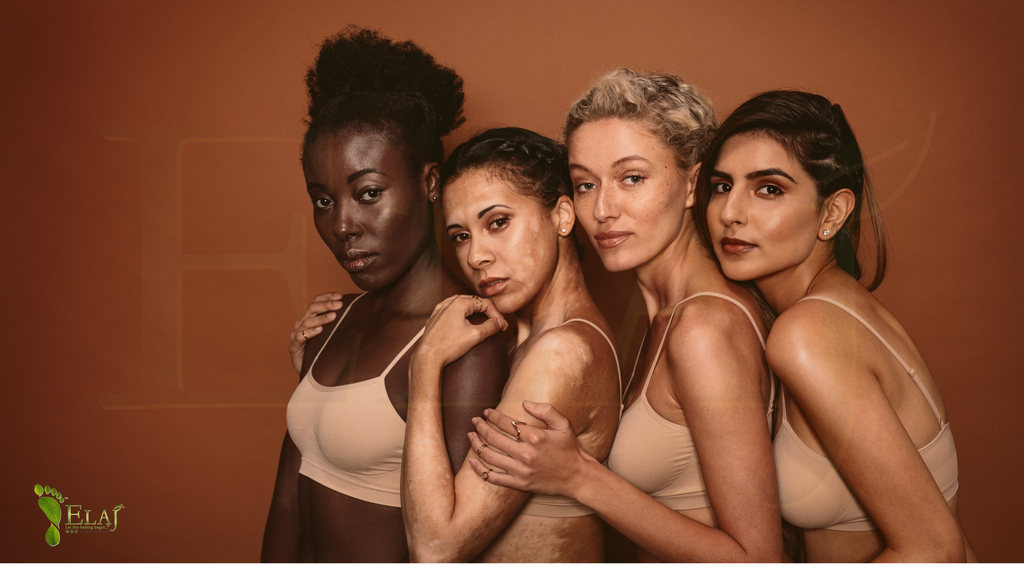The Misuse of Topical Steroids in India

Why was India experiencing a pandemic of topical steroid abuse?
This was due to a cultural obsession with lightening dark skin. This is a sad, social phenomenon that has to do with racial classification. The desire for lighter skin tones still has seriously dangerous and detrimental psychological ramifications among many Eastern, Mideastern and Asian cultures, not just India. Actors, models, singers, and the general public still deal with economic discrimination as well as social preferences in marriage proposals to lighter skin tones.
There were also other factors for topical steroid misuse resulting from public ignorance, lack of information and medical negligence. Pharmacies were disregarding the manufacturer warnings while profitable sales increased each year. The market was saturated with prescriptions for steroid cocktails of antibiotics and anti-fungals that would be re-filled and shared among family and friends without any direct supervision from dermatologists. Another factor was that there had been a shortage of dermatologists in ratio to the country's population of over 1.35 billion. Most of the dermatologists are located in urban municipalities completely denying access to so many in the outlying populations.
How did the consumers use the steroids to lighten their skin?
They mix topical steroid cremes that are known to thin skin with a bleach creme to lighten darker skin tones. That was the onset of an epidemic level of topical steroid addiction case studies. Since 2008, Dr. Koushik Lahiri and other doctors started seeing more and more patients that tried to alter a cosmetic issue, but unknowingly became far more injurious to their skin and endocrine systems with far-reaching consequences. It was not an eczema-induced prescription that caused the topical steroid addiction, but rather a cosmetic craze for lighter skin tone that triggered a topical steroid addiction epidemic!
Are topical steroids banned in India?
 One of the first heroic voices in India lobbying for change was the world-renown dermatologist, Dr. Koushik Lahiri. Since 2008 he has been a trailblazer documenting the detrimental history of corticosteroid abuse. Loaded with case studies, he pleaded to the Ministry of Health and Parliamentary House in India. His personal mission was to rescind the law and ban OTC (over-the-counter) sales of any topical steroid without a prescription. In August of 2016, he finally succeeded with his original proposal to the Indian Association of Dermatologists called: Stop OTC Sale of Topical Corticosteroids without Prescription. He has since been recognized by the International Society of Dermatology for his work on many fronts to protect public health and skin care and educating and encouraging international medical professionals to become more sensitive to the conditions.
One of the first heroic voices in India lobbying for change was the world-renown dermatologist, Dr. Koushik Lahiri. Since 2008 he has been a trailblazer documenting the detrimental history of corticosteroid abuse. Loaded with case studies, he pleaded to the Ministry of Health and Parliamentary House in India. His personal mission was to rescind the law and ban OTC (over-the-counter) sales of any topical steroid without a prescription. In August of 2016, he finally succeeded with his original proposal to the Indian Association of Dermatologists called: Stop OTC Sale of Topical Corticosteroids without Prescription. He has since been recognized by the International Society of Dermatology for his work on many fronts to protect public health and skin care and educating and encouraging international medical professionals to become more sensitive to the conditions.
He also founded a countrywide initiative task force to study and publish the first multi-authored international compendium on the topic: A Treatise on Topical Corticosteroids in Dermatology: Use, Misuse and Abuse.
This medical practitioner's reference tool aims: "To fill up the lacuna and to contribute significantly to the dissemination of knowledge about the indication/contraindication, mechanism of action, ethical use, side-effects and various other facets related to topical corticosteroid. Topical corticosteroids (TC) have greatly enhanced dermatologists' ability to effectively treat several difficult dermatoses. The available range of formulations and potencies allows them to flexibly treat all groups of patients, different phases of disease, and different anatomic sites. Improper/incomplete knowledge about topical corticosteroids' mechanism of action, indications, classifications, and contraindications has produced a rapid rise in the incidence of improper use of these drugs, which could potentially bring disrepute to this entire group of amazing drugs.
Responsibility for disseminating proper knowledge regarding when, where, and how to use TC both to internists and patients primarily rests with dermatologists. In this regard, the benefits of rational and ethical use and the potential harm of overuse and misuse for non-medical, especially cosmetic purposes, should be clearly conveyed before prescribing TC."
Will hydrocortisone ever be taken off the over- the-counter market in the United States?
That is highly unlikely due to the powerful wing lobby of Big Pharma. What we can do is educate ourselves, our loved ones, and report Adverse Drug Reactions to the FDA and register at www.PatientsLikeMe.com to become a better informed self-patient advocate! The doctors in India have taken great strides in causing ripple effects in the east. We, in the west, can learn if we choose to see the parallel universe of topical steroid addiction potential. Albeit, the original intentions of using corticosteroids were quite different, the results and consequences have the same endocrine disruption. This provides more valuable data that can be shared to document the clinical effects of addiction/withdrawal.
For more information on Dr. Lahiri .
Facebook page: www.facebook.com/NoMoreSteroidAbuse
Lahiri K, Coondoo A. Topical steroid damaged/dependent face
(TSDF): An entity of cutaneous pharmacodependence. Indian J Dermatol [serial online] 2016 [cited 2018 Nov 9];61:265-72. Available from: http://www.e-ijd.org/text.asp? 2016/61/3/265/182417
Coondoo A., Lahiri K. (2018) Topical Steroid Damaged/ Dependent Face (TSDF). In: Lahiri K. (eds) A Treatise on Topical Corticosteroids in Dermatology. Springer, Singapore://link.springer.com/chapter/10.1007%2F978-981-10-4609-4_13

- Suhein Beck






Comments 0